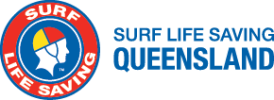The following is provided to give guidance relating to the use of surveillance towers for observing patrol areas.
- Towers or observation points should be positioned so they have a clear and unobstructed view of the area that is required to be under surveillance, this may include both the water and the beach;
- Towers and observation points should ideally be elevated to allow surveillance of all aquatic users;
- Towers should be placed so that they allow lifesavers to respond to a rescue without losing sight of the victim;
- Where a safe swimming area is identified away from a fixed tower location, the lifesaver should consider moving to the swimming area to maintain effective supervision;
- Where beaches are divided by jetties, piers or other obstacles (including natural), each part of the beach should be observed independently;
- Towers shall incorporate a shaded canopy.
All clubs using local council patrol towers shall adhere to the following requirements:
- Maximum of two patrol persons to use tower at one time;
- Persons in tower must have completed a minimum of a QLD Observers Award;
- No food or drink containers are to be left in towers;
- Leave towers clean and tidy at the end of patrol;
- Ensure permanent towers are locked at the conclusion of patrols;
- Ensure mobile towers are removed from the beach at the conclusion of patrols;
- Report any damage/breakage to patrol captain and/or relevant council officer.
NOTES:
- Patrol members must not congregate around towers
- Patrol members should be accessible to beach users and regularly mix with them
- Patrol members should regularly rotate (every 20 minutes) from the tower to the water’s edge



Post your comment on this topic.